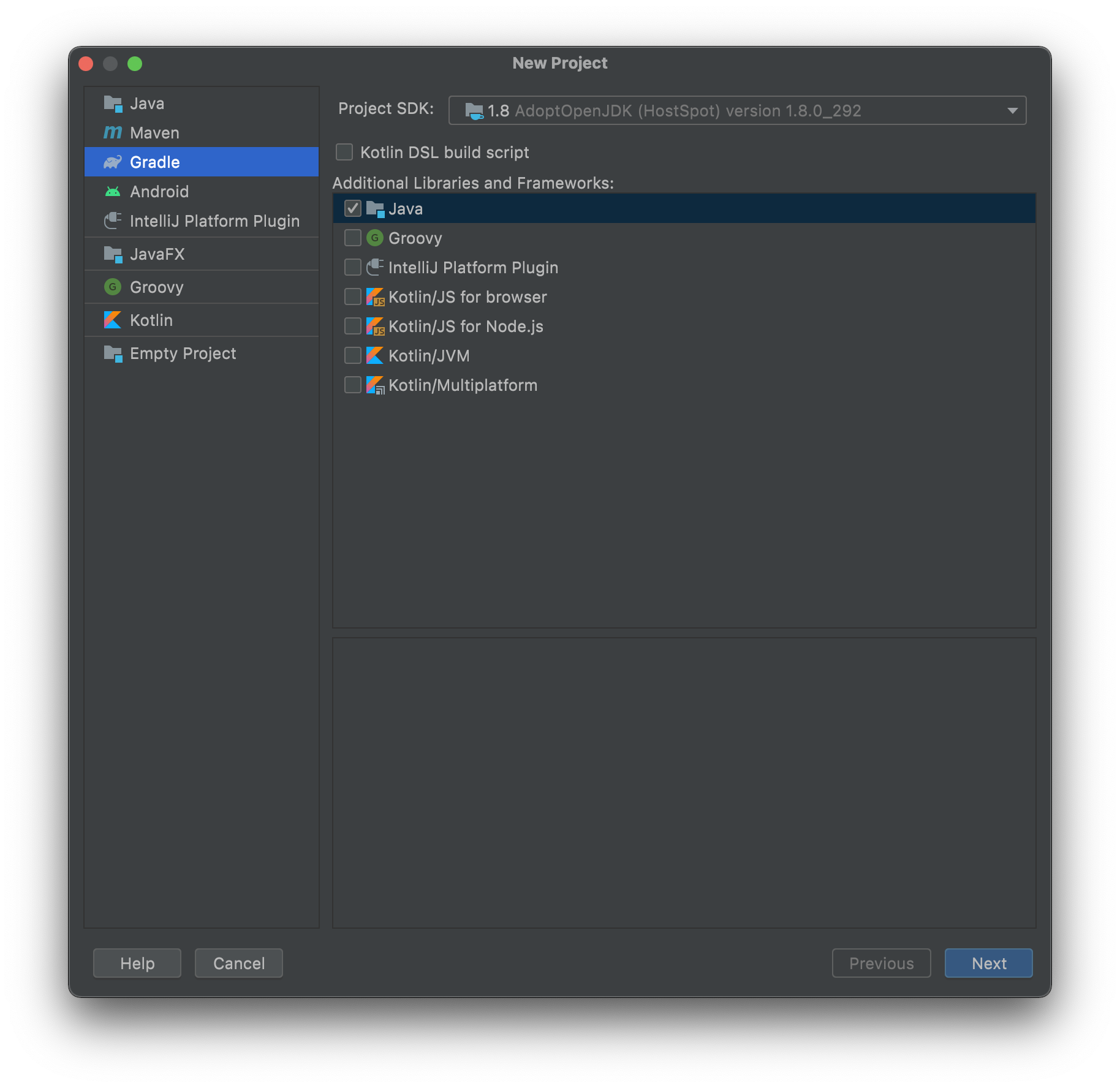Getting Started
Overview Supported Languages File Types Test Mode Postman Collection Tools and APIs PricingDeveloper Guides
API Overview Authentication Errors Combine Workflows Performance PDF Generation API ReferenceSupported Languages
Java C# JavaScript Python PHP Other Languages Deployment Options Security Privacy Support About PSPDFKitJava PDF API — Getting Started
With PSPDFKit’s Java PDF API, you can quickly process your documents by making HTTP requests to one of our 50+ API tools. You can make a single request to one tool or combine API actions to generate, edit, OCR, and convert your document (1 document can have multiple API actions).
In this guide, we’ll go through how you can use Java to make HTTP requests with our API by:
-
Installing the required dependencies1
-
Preparing the payload2
-
Making the request3
You’ll use OkHttp to make HTTP requests, and you’ll use org.json to build the instructions JSON object.
Installing the Required Dependencies
You’ll need a Gradle-based Java project. The easiest way is to use IntelliJ and create one from there.

Now you can add your dependencies to the build.gradle file:
dependencies {
implementation 'com.squareup.okhttp3:okhttp:4.9.2'
implementation 'org.json:json:20210307'
}
Finally, you’ll need to add document.pdf and logo.png files to the root of your Java project. You can use the sample files provided by us — document.pdf and logo.png — or use your own.
Your project is now ready to make requests to PSPDFKit API. Next, you’ll add your main entry point to the app. Create a new PdpdfkitApiExample class and add a main method. You can also add all the imports you’re going to use:
import okhttp3.*;
import org.json.JSONArray;
import org.json.JSONObject;
import java.io.File;
import java.io.IOException;
import java.nio.file.FileSystems;
import java.nio.file.Files;
import java.nio.file.StandardCopyOption;
public class PspdfkitApiExample {
public static void main(String[] args) throws IOException {
// Implement your call to PSPDFKit API here.
}
}Make sure you set this class as your app’s entry point. At this point, you should be able to run this class directly from IntelliJ.
Next, you’ll implement your main method. For this guide, you’ll watermark a PDF. First, you need a new OkHttpClient:
final OkHttpClient client = new OkHttpClient()
.newBuilder()
.build();Next, you’ll prepare the payload.
Preparing the Payload
For this example, you don’t need any special configuration to create your instructions JSON object:
final JSONObject instructions = new JSONObject()
.put("parts", new JSONArray()
.put(new JSONObject()
.put("file", "document")
)
)
.put("actions", new JSONArray()
.put(new JSONObject()
.put("type", "watermark")
.put("image", "company-logo")
.put("width", "50%")
)
.put(new JSONObject()
.put("type", "watermark")
.put("text", "Property of PSPDFKit")
.put("width", 150)
.put("height", 20)
.put("left", 0)
.put("bottom", "100%")
)
);
Here, you just build a JSON object using the org.json dependency you added earlier. For more details on the available options specifically related to watermarking, refer to our watermarking guide.
Next, you can create your RequestBody:
final RequestBody body = new MultipartBody.Builder()
.setType(MultipartBody.FORM)
.addFormDataPart(
"document",
"document.pdf",
RequestBody.create(
new File("document.pdf"),
MediaType.parse("application/pdf")
)
)
.addFormDataPart(
"company-logo",
"logo.png",
RequestBody.create(
new File("logo.png"),
MediaType.parse("image/png")
)
)
.addFormDataPart("instructions", instructions.toString())
.build();
Here, you assemble your multipart/form-data body containing the JSON instructions, your document.pdf that will be watermarked, and the logo.png that you’ll use as a watermark.
Making the Request
Finally, all that’s left is to actually make the request. Make sure to replace the your_api_key_here placeholder with your actual API key if it hasn’t yet been replaced:
final Request request = new Request.Builder()
.url("https://api.pspdfkit.com/build")
.method("POST", body)
.addHeader("Authorization", "Bearer your_api_key_here")
.build();
final Response response = client.newCall(request).execute();
if (response.isSuccessful()) {
Files.copy(
response.body().byteStream(),
FileSystems.getDefault().getPath("result.pdf"),
StandardCopyOption.REPLACE_EXISTING
);
} else {
// Handle the error.
throw new IOException(response.body().string());
}
This will actually send your request to PSPDFKit API and save the resulting PDF in the root folder as result.pdf.
At this point, you should be able to directly run this from IntelliJ and see result.pdf appear in your root folder. And that’s it — you now have everything set up to use PSPDFKit API from Java.
While this example made use of our watermarking API, this same approach can be used for all our available tools.
Full Code
For your convenience, here’s the whole class. Just copy it and run it:
import okhttp3.*;
import org.json.JSONArray;
import org.json.JSONObject;
import java.io.File;
import java.io.IOException;
import java.nio.file.FileSystems;
import java.nio.file.Files;
import java.nio.file.StandardCopyOption;
public class PspdfkitApiExample {
public static void main(String[] args) throws IOException {
final OkHttpClient client = new OkHttpClient()
.newBuilder()
.build();
final JSONObject instructions = new JSONObject()
.put("parts", new JSONArray()
.put(new JSONObject()
.put("file", "document")
)
)
.put("actions", new JSONArray()
.put(new JSONObject()
.put("type", "watermark")
.put("image", "company-logo")
.put("width", "50%")
)
.put(new JSONObject()
.put("type", "watermark")
.put("text", "Property of PSPDFKit")
.put("width", 150)
.put("height", 20)
.put("left", 0)
.put("bottom", "100%")
)
);
final RequestBody body = new MultipartBody.Builder()
.setType(MultipartBody.FORM)
.addFormDataPart(
"document",
"document.pdf",
RequestBody.create(
new File("document.pdf"),
MediaType.parse("application/pdf")
)
)
.addFormDataPart(
"company-logo",
"logo.png",
RequestBody.create(
new File("logo.png"),
MediaType.parse("image/png")
)
)
.addFormDataPart("instructions", instructions.toString())
.build();
final Request request = new Request.Builder()
.url("https://api.pspdfkit.com/build")
.method("POST", body)
.addHeader("Authorization", "Bearer your_api_key_here")
.build();
final Response response = client.newCall(request).execute();
if (response.isSuccessful()) {
Files.copy(
response.body().byteStream(),
FileSystems.getDefault().getPath("result.pdf"),
StandardCopyOption.REPLACE_EXISTING
);
} else {
// Handle the error.
throw new IOException(response.body().string());
}
}
}